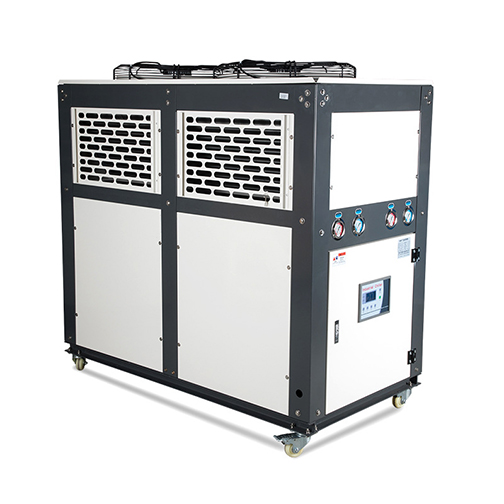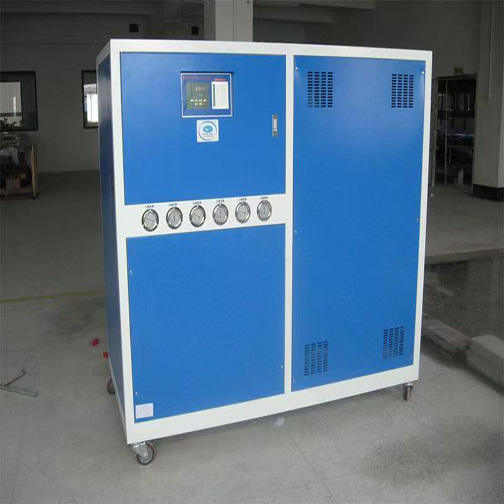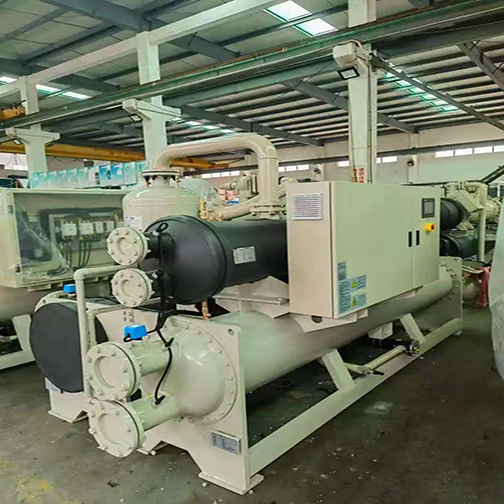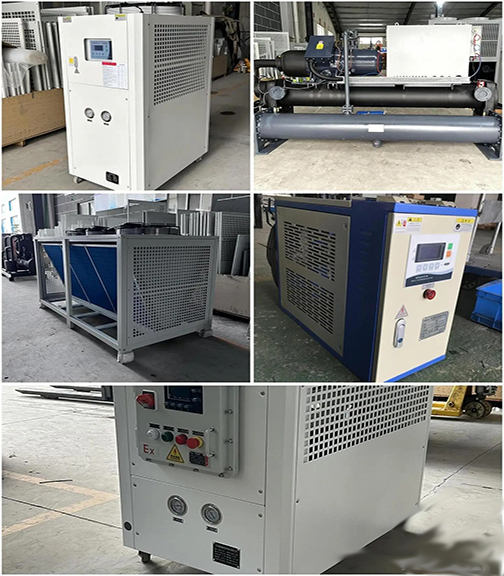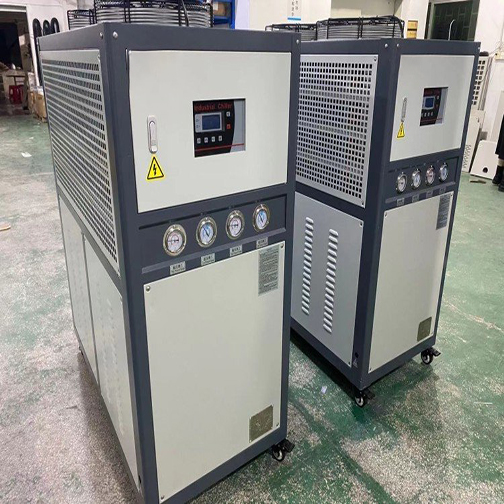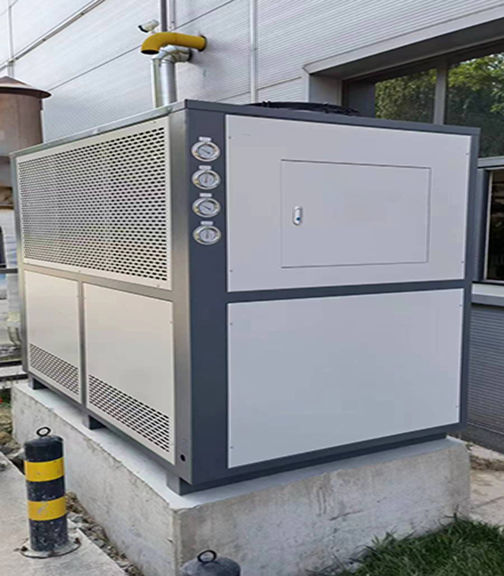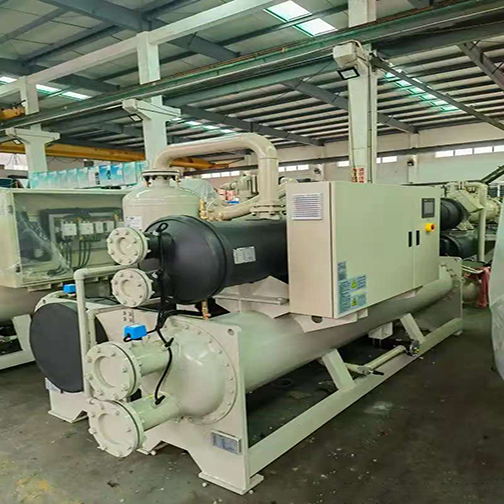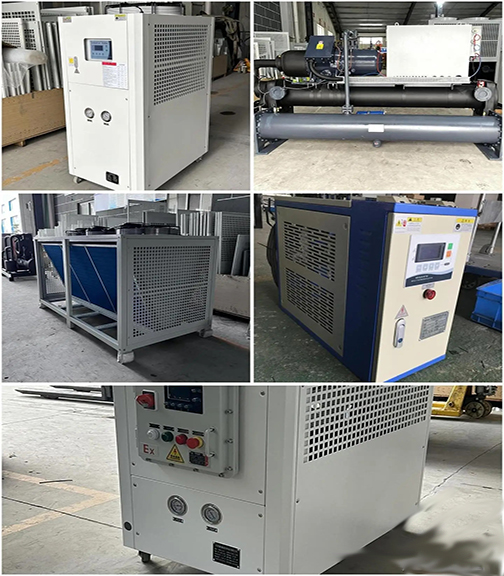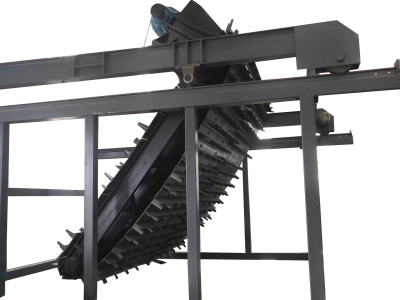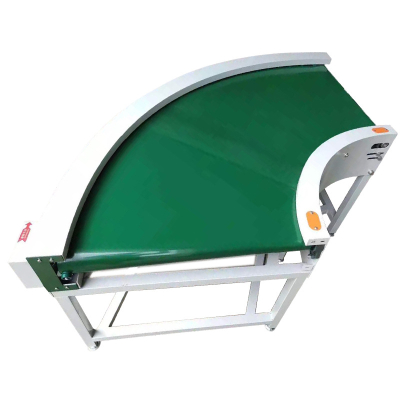Water-cooled chiller
- High cooling efficiency: Water has a large specific heat capacity and can absorb more heat. In addition, organic fertilizer water-cooled coolers usually use a circulating water system, which can accurately control the cooling temperature by adjusting the water flow rate and water temperature. It can quickly reduce the temperature of organic fertilizer to the required range and improve production efficiency.
- Uniform cooling: The organic fertilizer water-cooled cooler distributes the cooling water evenly by setting coils or jackets in the cooling tank. The material is fully in contact with the cooling water during the cooling process, which can achieve a more uniform cooling effect, avoid local overheating or overcooling of the material, and ensure the stable quality of the organic fertilizer.
- Not affected by ambient temperature: No matter how the external ambient temperature changes, the organic fertilizer water-cooled cooler can rely on its own circulating water system to provide a stable cooling effect, and can maintain good cooling performance in a high temperature environment, ensuring that production is not restricted by seasons and regions.
- Strong adaptability to materials: Organic fertilizer water-cooled cooler is suitable for organic fertilizer materials of various moisture content and particle size. Whether it is a material with high viscosity or a material with small particles, efficient cooling can be achieved through reasonable design of cooling trough and conveying device, and the cooling effect will not be affected by the characteristics of the material.
- Environmental protection and energy saving: The circulating water system can reuse water resources to reduce water waste. Compared with some air-cooled chillers, it does not need to consume a lot of electricity to improve the cooling effect in a high temperature environment. It has certain energy-saving advantages and meets environmental protection requirements.
Organic fertilizer water-cooled cooler structure
- Cooling tank: usually cylindrical, with cooling coils or jackets inside for cooling water to exchange heat with the material.
- Circulating water system: including refrigeration chiller, water pipe, return pipe, etc. The refrigeration chiller cools the water, sends the cold water into the cooling tank through the water pipe, and the hot water after absorbing the heat of the material flows back to the refrigeration chiller through the return pipe to achieve circulating cooling.
- Material conveying device of organic fertilizer water-cooled cooler: It consists of a feed port, a discharge port and a conveying mechanism, etc. It is responsible for evenly feeding the high-temperature organic fertilizer into the cooler and sending the material out after cooling.
- Support and transmission components: such as connecting frames, support blocks, gears, gear rings, rollers, supporting wheels, etc., are used to support the cooling tank and enable it to rotate smoothly while transmitting power.
Performance parameters of organic fertilizer water-cooled cooler
Take the common HG series as an example:
- HG-0808: motor power 5.5kW, reducer model ZQ250, production capacity 1-2t/h.
- HG-1010: motor power 7.5kW, reducer model ZQ350, production capacity 2-4t/h.
- HG-1212: motor power 7.5kW, reducer model ZQ350, production capacity 3-5t/h.
Application scope of organic fertilizer water-cooled cooler
It is suitable for cooling various organic fertilizers, including organic fertilizers made from livestock and poultry manure, straw, cake fertilizer, etc. Whether it is granular, powdered or block organic fertilizer, it can be efficiently cooled by water cooling.

